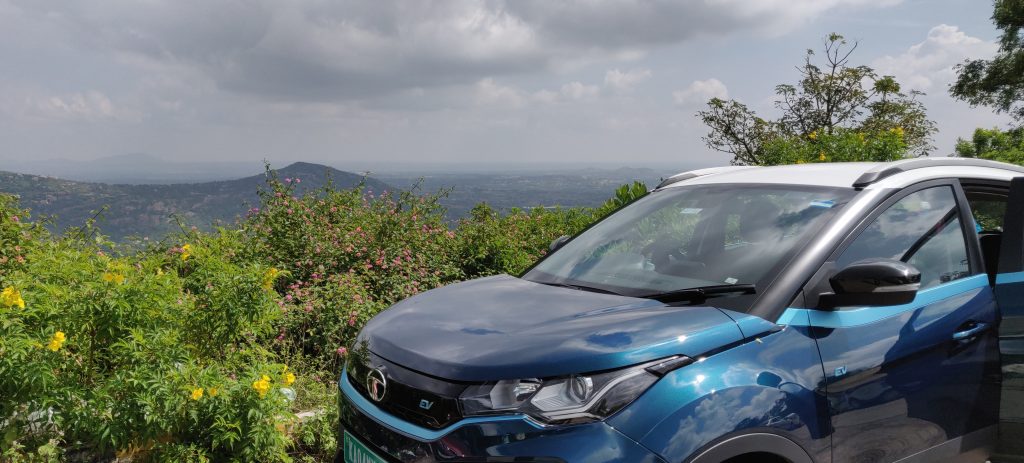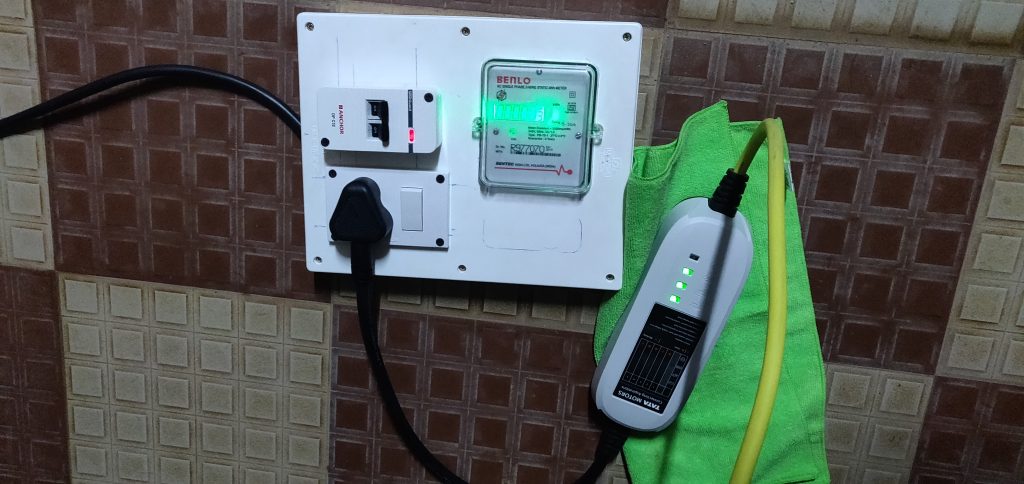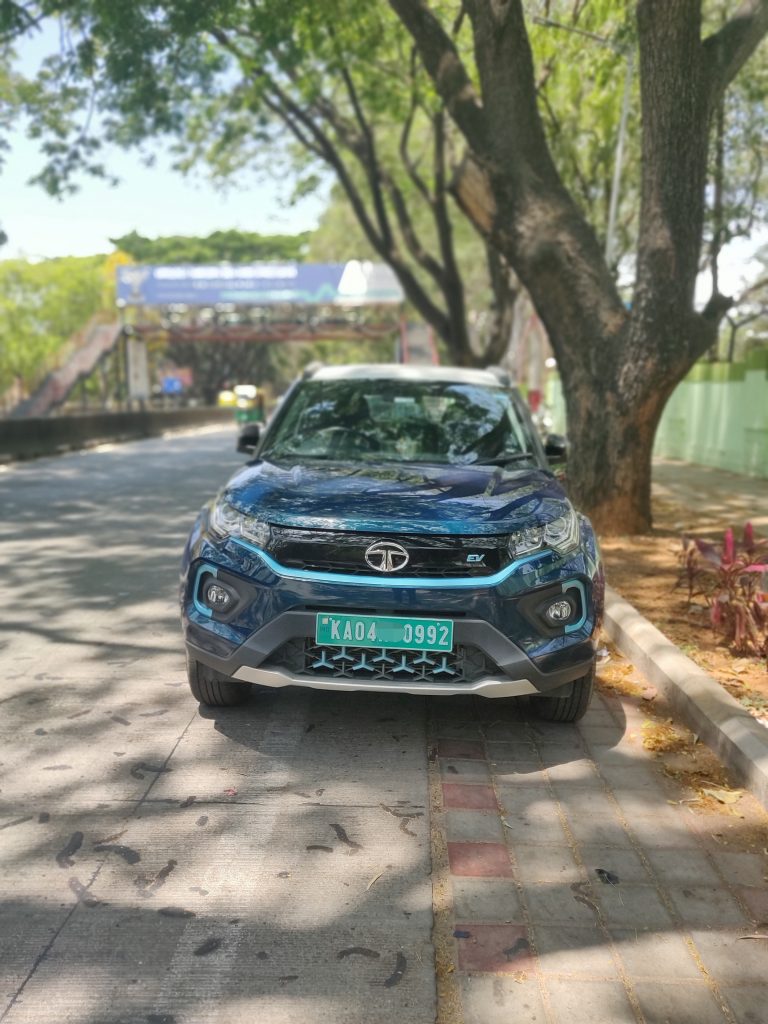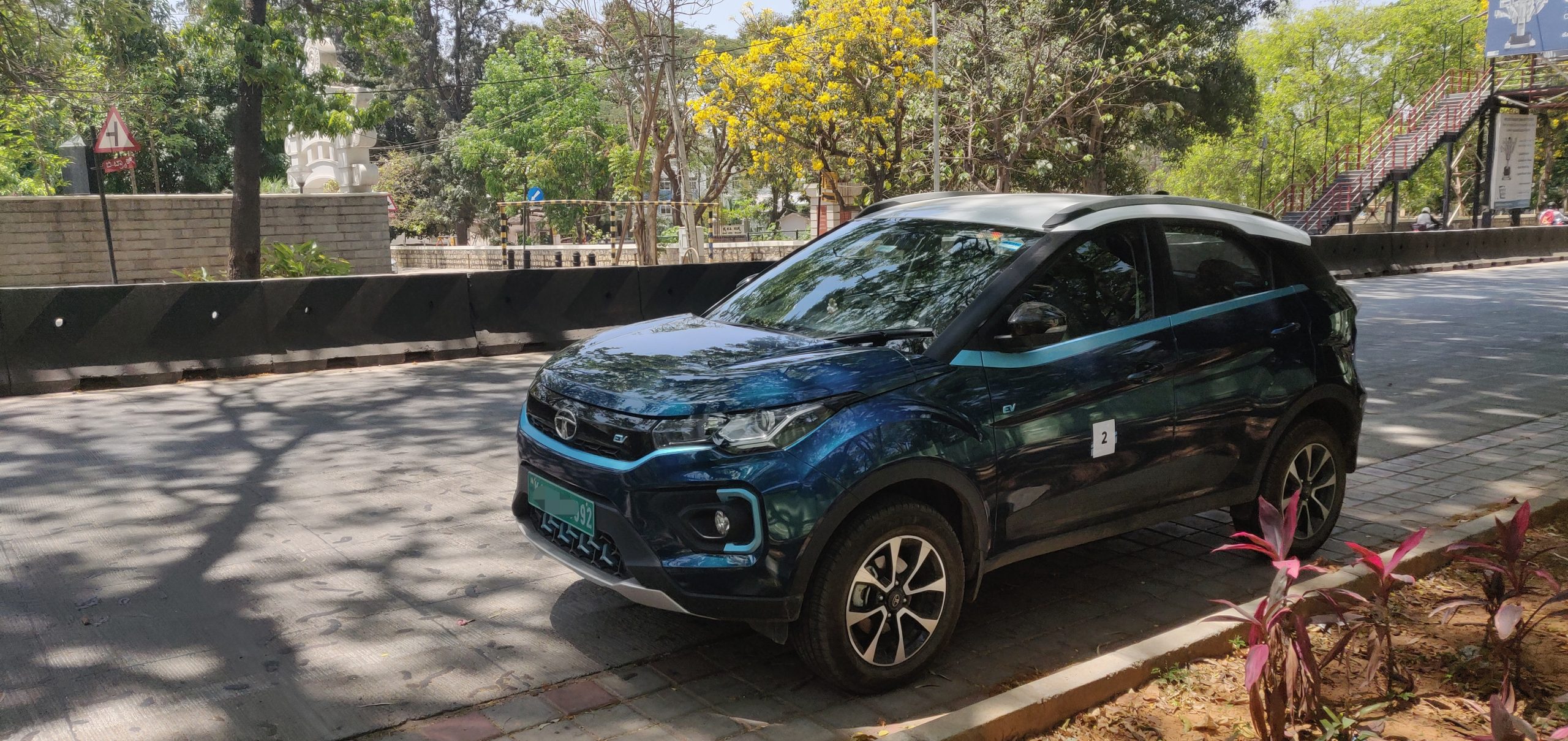In this very first blog of mine, I wish to share my views on the TATA Nexon EV. We have taken the delivery of the vehicle on 25th October 2020, and have clocked 8000 KMs in 5 months. I present my experience with this electric SUV which happens to be an amazing choice for travelling and beyond.
Unique Features
Starting off with a few small and unique features of Nexon (also common to ICE platform) which makes the driving easier and the SUV unique.
- Presence of hooks at various locations like boot, B pillars which is a boon for any Indian Customer.
- Speed dependent volume (activates in steps after 40-50 kmph) of the infotainment system which takes care of tyre and road noise.
- Lane change indicators: By cranking the indicator stick to half only once will blink the indicators for 6 quick times to change lanes on highways.
- The tinted IRVM (inside rear view mirror) is beneficial during night drives. On pushing the lever, the high-beams of rear vehicles is dimmed (passive) and vehicles can be seen without strain on eyes.
- While maneuvering in very tight roads, the ORVMs (Outside rear view mirrors) can be folded electronically by the push of the mirror adjustment button.

Review
The highly smooth and noise-less environment in the EV makes driving very peaceful. Overtaking and panic braking are very efficient and is highly reliable. Although the vehicle is heavy, it is not the case while maneuvering or accelerating. Though the projector lamps are not very bright, the high beam is very powerful and has an efficient throw of beam.
The 8000 kms that we have driven, the Nexon EV has given us an average range of 260 kms (28600/110) bringing the approximate cost to exactly 1 Re/km considering the price of 8 Rs/kWh of slow charging. 28600 being the effective total capacity of the battery in watt-hour and 110, the consumption in wh/km.
With the latest updates to the softwares of Nexon EV, the car has showed improved efficiency and patterns of cell balancing during slow charge. The infotainment system also has become smooth with the new version and using Google Maps has become easier with Android Auto.
Tips for efficient driving and Maintenance
- For very long drives (above 250 kms) on a single charge, always try to maintain one or zero bar eco acceleration. This bar is shown as green line on the left side of MID (multi-information display).
- The tyre pressure must be kept between 34-36 for maximum range.
- The max speed should not exceed 80 kmph and should be 70 kmph or less throughout. More the number of speed changes, more is the battery consumption.
- The usage of AC has an effect on the battery. This effect is more if the difference in ambient temperatures inside and outside the car is more. The compressor has to exchange more heat to bring about the temperature change. Hence, if AC is to be used efficiently keep the temperatures very near to the OAT (Outside air temperature). On an average the temperature range of 24-26 degree Celsius would be ambient without excessive cooling.
- Anticipating bumps and obstacles on road is recommended. This has to be done only if the traffic movement is smooth and is not at the cost of SAFETY. On an average 100 – 200 meters ( > 300 meters for speeds more than 60-70) of regeneration can be utilized while good anticipation of obstacles and bumps.
- As a precautionary measure we have never washed the car by drenching it in water. Only wet and dry wipe alternatively has been done (micro-fiber) to prevent any unwanted or unknowing problems to the EV that can be caused due to moisture logging. Adding to it is the ceramic coating which has been done on the car and this type of wash is beneficial for the paint and the coat.
Driving and General Tips
- Do not turn the steering while the brakes are applied and the car is at halt, this causes more wear and tear to brakes as well as tyres.
- While at signal, hand-brake can be safely engaged in D mode without causing any issues. But be sure not to accelerate (with hand-brake engaged) as D mode is active and may skid the front tyres.
- For very steep climbs or inclined road starts, either of the following can be done to prevent roll-back of car: i) Cross the right leg to toe the accelerator pedal and heel to lift off the brakes. ii) Use sports mode and and switch right leg from brake to accelerator very quickly (< 0.3 seconds), this might roll the car maximum by a few inches and is an efficient way.
- Always charge the car to 100 % while slow charging as recommended in the manual, as balancing of cells happen and BMS is calibrated correctly.
- Do no use the pre-cooling feature excessively as it may drain the auxiliary battery quickly.
Optional Items to be kept in EV

- An extension box with sufficient length made of high quality wires (4 sq-mm cross section). A grounding circuit is also recommended as many village locations may not have a grounded circuit and this may prevent the car from charging.
- Multimeter to check auxiliary battery voltage, and to check continuity, current, voltage of various circuits for charging.
- Tyre inflator.
- A 12V DC charger/ jumpstart unit to top-up the auxiliary battery if it goes dead.
In my next post I will share the mileage and trips information in detail along with many other topics.


17 replies on “TATA Nexon EV XZ+ Ownership Review with Tips and Tricks”
Pradyumna , really good review! Thanks for sharing your blog!
Thanks a lot for excellent tips !!
Well written 👍
Well written Pradyumna! Keep going ! This has come as a boon for new owners like us. Will look forward to hear from you more often.
Excellent review with the facts. Whether the extension meter is readily available or we need to make it personally? Thx
The extension has to be custom made based on length requirements. Any local electrician would make it by showing this picture. It consists of a single phase energy meter, double pole fuse, 16 ampere switch. The wire used is 4sqmm thick.
A nice and detailed information..thanks for sharing.
Excellent review , covering point to point with easily understandable language. This review & tips will certainly help all the NEV owners.
Splendid information Pradyumna! Thanks for the info👍😊
Excellent blog thank you for sharing the tips.
It would really help if you could expand on the below pointers and show how these optional items help that would be wonderful.
A grounding circuit is also recommended as many village locations may not have a grounded circuit and this may prevent the car from charging.
Multimeter to check auxiliary battery voltage, and to check continuity, current, voltage of various circuits for charging.
Tyre inflator.
A 12V DC charger/ jumpstart unit to top-up the auxiliary battery if it goes dead.
1. Grounding: Say we travel to a remote location and there is a provision to charge through a 16 Amp socket, but earthing has not been done. In this case the EV won’t charge for safety reasons, hence by having a grounding circuit (a metallic rod with wire attached at one end) should be placed 3-4 feet below the ground. A saline solution should be poured on the metal rod for a good grounding. The other end of wire is joined to the longest pin of the charger plug.
2. In case the EV is not used for more than 10-15 days, it is recommended to check the battery voltage of aux battery. Else the systems may develop errors even though the vehicle runs. For most of the vehicles the voltage should not be less than 12.6 V.
3. Inflator can be used on long trips (> 1000-2000 km in a round trip) as it is powered by the 12 V port inside the car. It is also useful for other vehicles like 2-wheelers.
Very good information and thanks for sharing such specific and precise information.
Wow, very well written and backed up with real time data. Answers all possible queries and doubts. Well done Pradyumna
As últimas novas web en tempo real
Amazingly written!
I have taken Nexon EV test drive & AC was not sufficient to provide complete cooling effect even at low mode & with maximum blower on for 15minutes afternoon in pune. Anyone experienced the same?
Well explained.